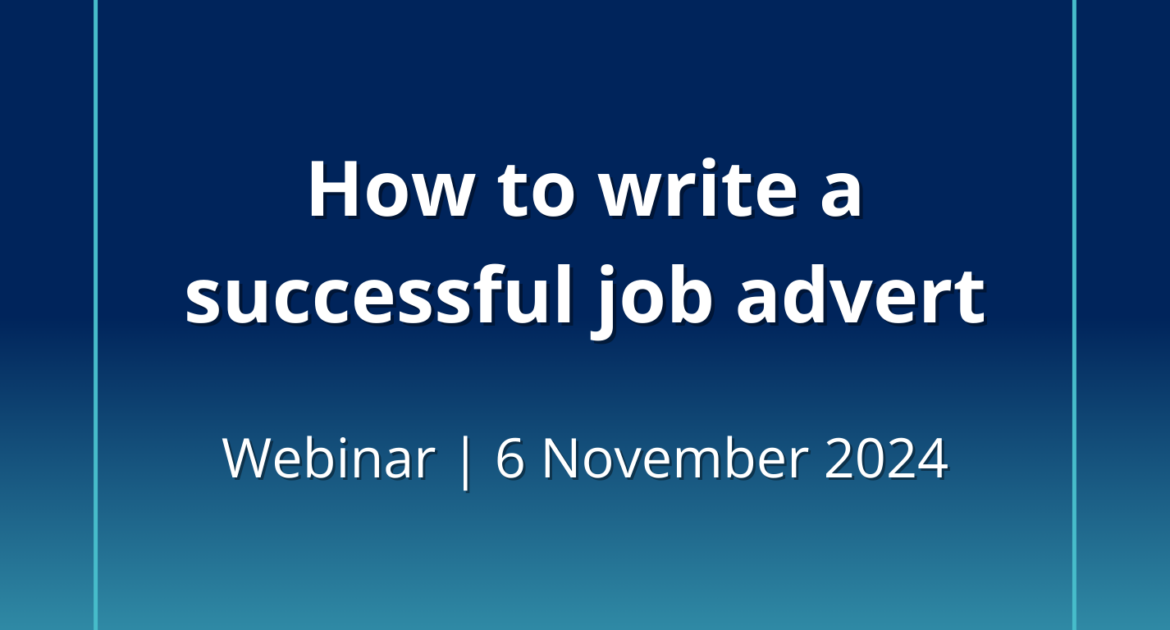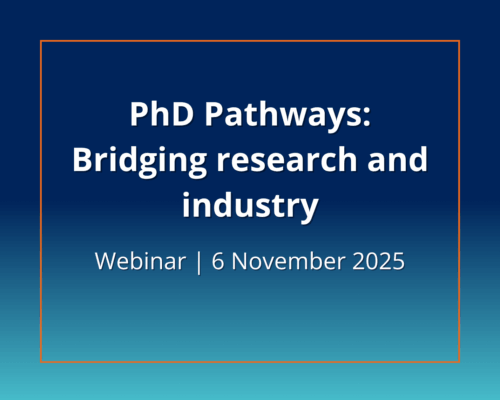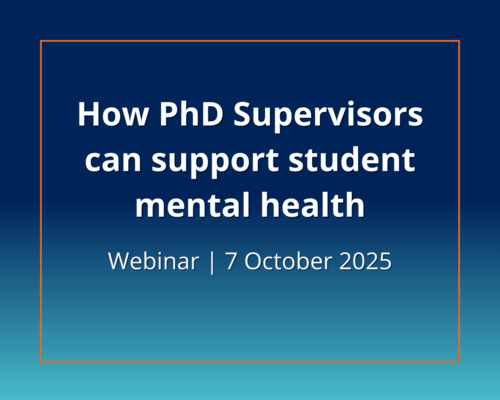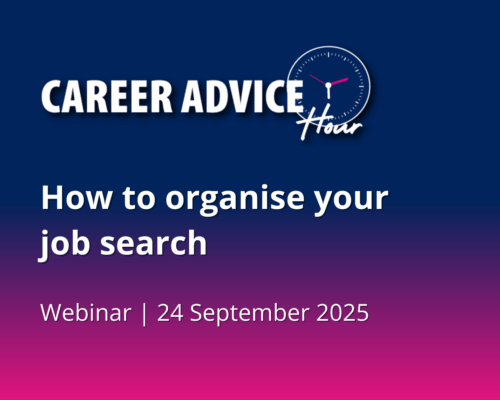‘How to write a successful job advert’ webinar summary and recording
Crafting the perfect job advert is a vital step to finding the ideal candidate.
Partnering with Contentetc, Director, Becky Bocchetti hosted this exclusive webinar specifically aimed at recruiters and HR professionals in Higher Education and industry.
You can now view the full webinar recording or read on for a summary of the main points exploring the topic.
Overview
- Who are you writing for – keeping the audience at the heart of what you write
- Starting strong – getting the job title right
- Benefits over features – the ‘what’s in it for me’
- Structuring effective ads
- Trigger words and no go’s
- Less is more
Who Are You Writing For
The primary objective of a job advert is to get the right adverts in front of the right people.
Creating adverts with the ideal candidate in mind makes it easier when structuring the ad as you want it to connect with them and not this broad audience.
It also allows those who are not interested or applicable for the role to move along quickly as they will know the advert is not for them.
It is important to be consistent but also unique in your adverts. The brain will ‘pattern match’ if it believes it has seen this before and will move on.
It is great to include video content or other available media, but moreover the nuance of language. Ensuring the roles are distinct which will reflect in the ad copy.
Adverts need to be candidate first, not job first.
Research people in similar roles to get an idea of who you are speaking to in your adverts; what would they want in a role, what are their motivations, why work for you over other organisations.
Getting The Job Title Right
The job title is how candidates find you. You want your job to show up to the right people.
Don’t be creative for the sake of being creative with the job title.
Do not just use the internal title for the role if it does not accurately portray the role to external candidates, Becky suggests putting the standard title alongside the internal one if that is what they will be referred to and will be on their contract.
Becky uses the example of ‘ninja apprentice’ or ‘technical wizard’, it is unclear what the roles are, and no one would search for these job titles.
Associate Professor is also vague, candidates would have to view the advert to determine if it is a professorship suitable for them. Including department, subject or seniority in the job title helps your job stand out and not get lost in a sea of ‘associate professors’.
The job title is the biggest piece of text a candidate will see when searching for a job, keep it straightforward and simple.
Think about the keywords a candidate would search for and make sure your advert lines up with that.
You want all candidates to have a positive experience on your advert regardless of whether it is the job for them. It creates a ‘halo’ effect as the candidate will be more likely to search for roles from that employer if they found the advert easy to read.
Benefits Over Features
There is a difference between benefits and features, what is in it for me and what do you want from me?
The traditional benefits of a job, salary, pension etc., are not the extent of benefits from a job and are often expected.
Highlight the intrinsic thing that will make this job something the candidate would like for themselves. For example, wanting to work in a particular team or area of research, experience a new work environment or simply the job is nearby.
When you think candidate first these are the things that will come up as what your organisation/job can offer that is unique and meets the candidates’ expectations.
Night Bus Driver Advert Example
Becky uses the example of recruiting a night bus driver in London, incorporating what she has talked about so far and how to apply it to this advert.
Structuring Effective Ads
Considering how candidates have limited time you want to ensure that every word in your advert is necessary and in an order that makes sense.
There are a few ways to structure an advert.
The News Pyramid – as in the news, the most important information goes at the top and it gets less essential as you go through the article. The headline and first few lines must include the most salient information.
Using this principle in an advert, the information does not become less important from the ideal candidate’s perspective.
If they are interested in the role, they will keep reading the advert to find out more, but those who the role is not suited for should be made aware early so they can move on.
It’s about providing relevant details to the most engaged and targeted audience.
Regarding how to structure copywriting, follow the AIDCA acronym – Attention, Interest, Desire, Conviction and Action.
How do you grab the reader’s attention, keep their interest and have them desire to find out more.
When it comes to conviction, there can be barriers. Think from the ideal candidate’s perspective what they could be and address them in the advert.
Be clear when asking for qualifications and requirements, ensure they are essential and include alternative routes if possible.
Action, applying for the role. Make it simple to apply!
Becky expands on each step and then applies it to an example advert, showcasing how to use this acronym in your advert structure and copywriting.
Trigger Words and No-Go’s
It is easy to slip into jargon and corporate buzzwords that come across to the candidate in a different way than intended.
For example, dynamic could mean many different things, do you want the candidate to be energetic or an independent worker?
Great time management is another one. Becky makes the valid point that everyone should have great time management in a professional job but including it specifically in your advert could come across that the candidate will have an overwhelming amount of work.
The same with detailed-oriented, does it mean that you want them to be meticulous or will no one be checking their work? Flexible can come across as the candidate will be performing tasks outside of their role regularly.
These attributes can be seen to negatively reflect the organisation’s working environment despite intentions.
Use simple, clear, directional language. One idea per sentence.
It is good to read your sentences out loud, don’t pause until you come to a full stop and if you run out of breath before getting to the end then the sentence is too long.
Writing in the active instead of the passive is a simple change that makes a difference.
Don’t use many words when one word will do, for example, use ‘most’ instead of ‘the majority of’.
Less is More
Overwriting is a key mistake; candidate’s time is limited, and they will give up reading an advert if it is not engaging and complicated to read.
Becky demonstrates this idea with example ads; how too much text can be overwhelming and ways you can simplify words that seem straightforward.
It is also important to avoid gender-coded language, check your own internal bias and always think candidate first.
Final Takeaway
Before the final takeaway, Becky provides a quick summary of the topics discussed.
- Be clear, simple and concise
- Create an ideal candidate profile and write to them as a human
- What will they search for?
- Benefits are more than salary and pension
- Murder your darlings (go back and remove unnecessary words)
Q&A
Are there any key difference between temporary ads versus permanent ads?
Yes, but the principals stay the same across temporary and permanent ads.
For temporary adverts, you need to highlight the benefits of working on a temporary basis, what will a temp value from this role and realistic expectations.
Becky uses examples from social media on difference approaches to showcasing a role.
How can I use more creative language to make the advert more catchy?
Keeping in mind everything that has been discussed so far, don’t overwrite and be clear. You can be creative in the benefits section of the advert by using visuals, combining simple and creative language and incorporating unusual words to get the reader’s attention.
Meet the Host

Becky Bocchetti, Contentetc Director
Becky Bocchetti runs Contentetc, a training company dedicated to empowering people to write effective digital content that delivers the results they need. Her experience working with both recruitment and academic teams within HE institutions gives her a unique opportunity to help you develop successful job adverts.





Leave a Reply